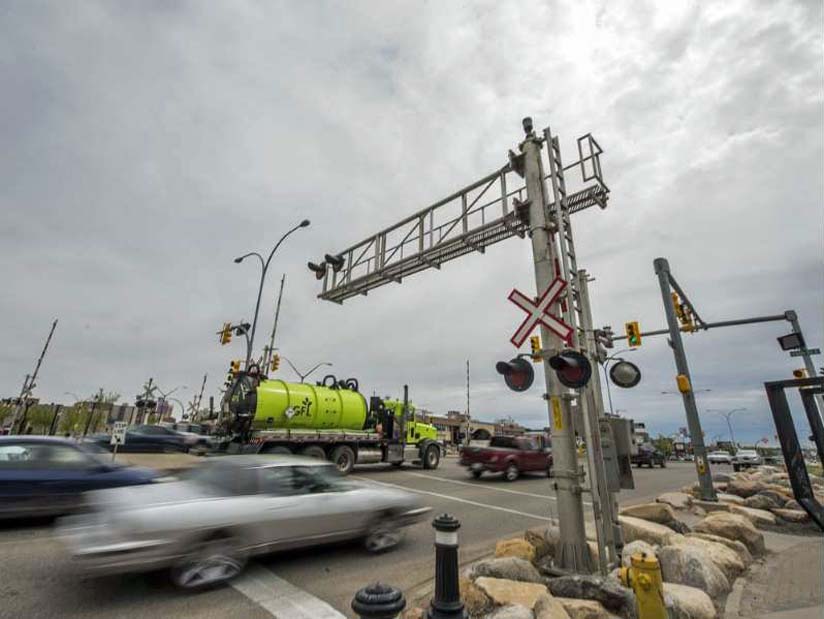
Saskatoon Saskatchewan - Saskatoon city council plans to keep looking for a solution to the problems created by trains rumbling through
the city, a long-standing issue that holds up traffic and hinders emergency responders.
CP and CN recently dismissed city hall's proposal that they share the latter's corridor south of the city, calling it unworkable and unfeasible.
Now, city administrators are expected to look at the possibility of building overpasses and underpasses at some of the intersections along CP's main line,
which runs through the heart of the city.
Coun. Hilary Gough made the request to look at potential solutions on an intersection-by-intersection basis two years ago, amid a study aimed at finding a
means of addressing traffic and safety issues.
That study, completed by HDR Corporation, concluded that building a new line and bridge for CP in CN's corridor would cost $589 million, while more than a
dozen overpasses and underpasses would cost $374 million.
The consultant deemed both options financially unviable, but noted other considerations are difficult to measure.
Gough's request, discussed on Tuesday by council's transportation committee, is expected to result in city hall reporting back early next year on possible
solutions for individual intersections outlined in the consultant's report.
"Not every at-grade intersection causes the same level of challenge for our community, and that looking at them on an individual basis is really
important," said Gough, who does not sit on the committee.
Gough praised attempts to mitigate the problem using technology, such as sensors that alert the fire department when crossing arms are down, but said a full
solution "needs to be considered even if it isn't at a city-wide level."
Mayor Charlie Clark said the railways' response to the shared corridor proposal is important "because we don't want to be chasing ideas that are not
feasible any further than it's worth."
At the same time, Clark emphasized the need to continue having "strategic" conversations with the railways to improve safety and efficiency, and
pledged to do so "as long as I'm in this chair."
CN moved its line out of the city in the 1960s.
Relocating CP's line has long been identified as a possible, though a difficult and costly solution, to the traffic jams caused when trains run through the
city.
It would also have the benefit of providing additional safety should a derailment occur.
Both CN and CP criticized the study commissioned by city hall, arguing that it concentrated on road users' needs and did not offer a serious analysis of all
the issues related to moving a major rail line.
Alex MacPherson.
(because there was no image with original article) *2. Original news article image replaced.
(usually because it's been seen before)
provisions in Section 29 of the Canadian
Copyright Modernization Act.

